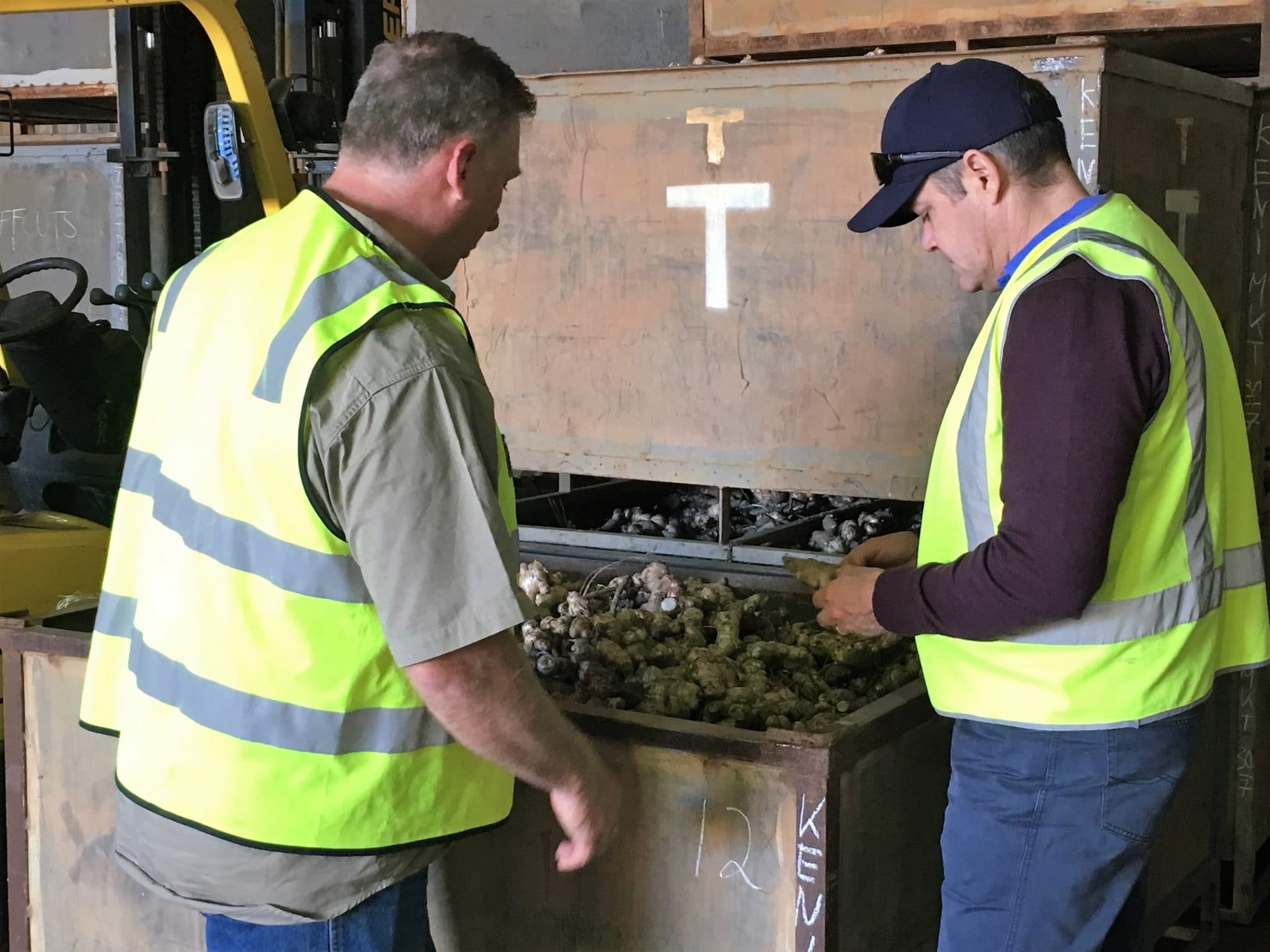The benefits and achievements of this niche Australian industry were on show at the 2018 Ginger Industry Field Day, where growers and industry partners gathered to hear the latest research and development updates. As the major event on the industry calendar, the field day brought together 41 growers from 23 farming operations, representing 95% of Australia’s ginger production, along with ginger processors and supply chain partners.
The ginger industry joined the AgriFutures Australia rural industries mix in 2010-11, with the introduction of a RD&E levy focused on critical disease issues threatening the industry’s viability. Thanks to the investment, the industry has seen a recovery in production and has a bright outlook for future growth. The levy investment continues to grow from strength to strength and industry priorities outlined in the Ginger Program RD&E Plan 2017 – 2022 have set the direction for future investment.
Built on three critical RD&E objectives, the industry is supporting research projects focused on driving on farm productivity to ensure the industry can compete with fresh ginger imports; market research to identify profitable channels for anticipated production growth; and industry engagement to ensure uptake of research outputs.
Project updates were provided at the 2018 Ginger Industry Field Day, with a number of researchers presenting across a range of themes including parasitic nematodes, tissues culture production, Freshcare food safety and training, and marketing research aimed at boosting the demand for Australian ginger.
Demonstrations at the field day spoke to the industry benefits when it comes to technology adoption. A drone deploy mapping exercise offered insight into how drones can be used in ginger systems for planning and monitoring of blocks, information on controlled release nutrition, irrigation system automation and weather monitoring were also highlighted as opportunities to improve business practices.
Ginger production is both labour and capital intensive, and technology adoption in the industry is an area of great opportunity, particularly for younger growers, according to AgriFutures™ Ginger Program Advisory Panel member, Nicole Christodoulou of Carter & Spencer Group.
“A big challenge is getting young people into the ginger industry, and one way to attract young people is to promote the use of technology in the industry. It is a hard crop to grow but we want to get people excited about what technology can offer to grow such a magnificent crop,” said Ms Christodoulou.











